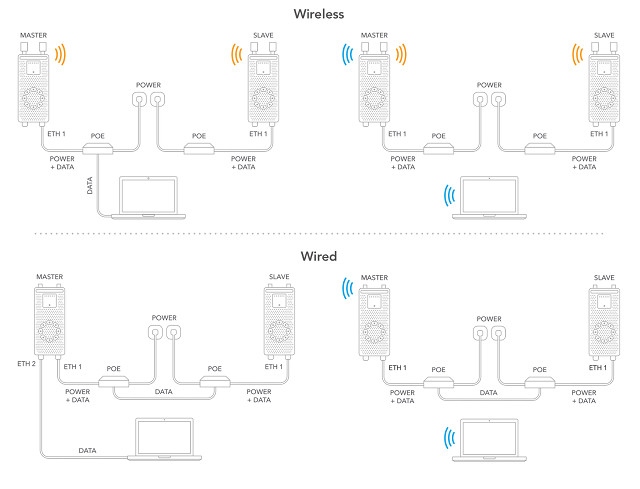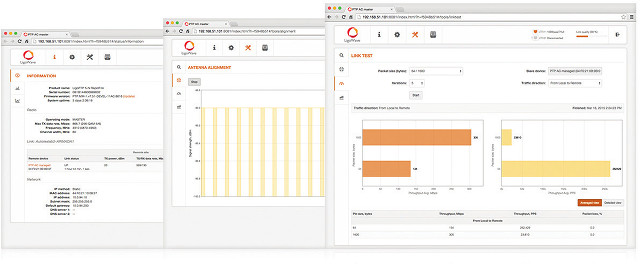Last week-end I went to a conference showcasing local products and companies, and there was a small section for “smart cities”. Most of that section exhibited solutions for security applications such as IP cameras and DVR, as well as various metal detectors, but one company did have some wireless connectivity solutions. I asked a sales engineer which technology they used, and he said it was a proprietary solution operating at 5 GHz, so I asked if they had anything relying on LoRaWan or Sigfox, and he had never heard about those. That’s because the solutions offered where not for low power long range connectivity, but instead backhaul wireless connectivity with solutions offering up to 100km range for point-to-point connectivity up to 480 Mbps, or up to 36 km for point-to-multipoint solutions.

Those type of products are used by cities to monitor their CCTV system, telcos, and the industry (e.g. mining, oil fields..). The local company, a distributor, was promoting products from InfiNet, and Ligowave, and the sales engineer told me the latter had products better suited to small businesses with lower power consumption, most probably because they also have 802.11n and 802.11ac solutions for SMEs.
Both companies have a wide range of products, but let’s have a look at Ligowave LigoPTP point-to-point wireless bridges, notably LigoPTP 5-N/ 5-23 RapidFire main specifications:
- CPU – 1.2 GHz CPU dedicated for data processing running LigoOS / LigoWave OS
- Channel Size – 5/10/20/40/80 MHz
- Aggregated data throughput – 700 Mbps
- Packets per seconds (PPS) – 200,000
- Ethernet Interfaces – 2x 10/100/1000 Mbps Base-T allowing for 1+1 (failover)
- Antenna Gain/Type – 2-53: 23 dBi; 5-N: 2x N-F antenna connectors
- Pole diameter – 1 to 12.4 cm
- Titling – +25 / -45°
- Proprietary W-Jet V protocol – specifically engineered for high performing PTP scenarios, minimizes interferences even across long distances and stabilizes latency within 2-4 ms
- 2.4 GHz WiFi for local configuration
- Power – PoE 802.3af (37-56V)
- IP Rating – IP-67 rated cast aluminum enclosure
- ESD protection – IEC standards, Class 4

The diagram above shows different ways to connect the slave and master devices with PoE always providing power through an inserter, and data transfered through long range RF (orange), short range RF (blue), or over Ethernet. RapidFire GUI allows configuration over WiFi or Ethernet, and includes a setup wizard, a spectrum analyzer to find the optimal operating frequency, and other tools. Once the master is configured, the parameters will automatically be applied to the slave units.

If you are interested in finding out more LigoPTP RapidFire Wiki has more info about the firmware, different configuration options, installation instructions, and more. More P2P and P2MP products with various capacities and features can be found in the aforelinked InfiNet and Ligowave websites.

Jean-Luc started CNX Software in 2010 as a part-time endeavor, before quitting his job as a software engineering manager, and starting to write daily news, and reviews full time later in 2011.
Support CNX Software! Donate via cryptocurrencies, become a Patron on Patreon, or purchase goods on Amazon or Aliexpress




Sure, but can it measure gravitational waves?
You forgot to ask the the typical retail price for one of these must have (if you live out in the boonies) devices.
“…backhaul wireless connectivity with solutions offering up to 100km range for point-to-point connectivity up to 480 Mbps, or up to 36 km for point-to-multipoint solutions.” I’ve designed and built SDH STM-1 155.366 Mbps and STM-4 601.334 Mbps (info rate) C-band microwave links for carriers. One was 97 km in a single hop in a tough country propagation-wise (Central America) I think your friends are going to need bigger radios and/or bigger antennas and/or lot’s of free bandwidth (for aggressive modulation and error correction coding) if they’re going to do a claimed 100 km 480 Mbps link in one hop with… Read more »